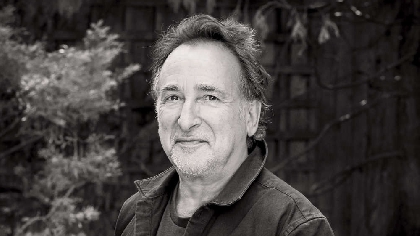The artists tune to Boom!

From Mark Wynter to Tony Christie (pictured), it’s always a lovely surprise when we hear from those who actually made the music we play.
We know Sir Tim Rice tunes in to Boom, alongside the great Mike Batt too. Although immediately associated with the Wombles, you can’t ignore his work with Katie Melua and writing Bright Eyes! Good to have you with us, Mike (He’s working on a really interesting project for Ukraine at the moment).
Paul da Vinci (the voice of Sugar Baby Love) loves hearing us air his new song - and when we played I’ve Got You On My Mind by Dorian Gray the other day, we heard from the real Dorian - Tony Ellingham.
It’s always so flattering that those whose lives are built on music let us know they're choosing our station for their listening pleasure.
The formula
Our recipe is largely unchanged since we began.
As we say, ‘every song’s a surprise’ in that you never know what’s coming next, an approach rather different from other radio stations which become popular by playing the biggest hits over and over again – a proven approach which attracts huge audiences on stations around the world.
Boom seeks to appeal to anyone over 60 – about a third of the population - and we recognise that our lifetime personal collections are probably eclectic to say the least. So, we mix things up at Boom - exactly as we always have - from the ‘50s to the present day, always majoring on the '60s and '70s as they are the most popular by some margin.
The surprises
The other Boom difference is that we play many thousands of different tracks, rather than just the most familiar tracks from an artist’s repertoire. And one thing that has changed in our five years is that we are now playing more different tracks than ever before!
That doesn't mean that every track we play will be a rarity. We know from our Beach Boys chart that the impeccable God Only Knows is loved by more Boom listeners than any other Beach Boys track - so we make sure we leave room for it. Not playing the most popular songs would be a rather odd strategy! But we also play loads of other Beach Boys tracks too.
We have always included the big hits on Boom - we simply play them a lot less frequently than other stations, mixed in with the many treasures.
And when songs are repeated, you'll hear them first pop-up again in a different hour of the day – thus heard by many different listeners, given the majority listen only for an hour or less a day.
If you're a very loyal listener, you'll hear artists or songs more often than most listeners. By contrast, if you're not, there's a risk you may think we don't play your favourite artist or song at all - so it's important for us to play them just often enough!
The challenge!
We receive emails from some listeners expressing their views vigorously: "please stop playing X" or "you need to play more from Y"; and from the self-appointed 'Ministers of musical truth' who appear puzzlingly confident they know exactly what everyone else should be listening to!
Let’s illustrate the challenge...
Imagine you're asked to list an hour of the songs you really love. Then do it again for another hour’s music. Then try doing a list for each hour of the day – for a month. Then knock on your next-door neighbour’s house and ask them for their lists – and try to blend them with yours. Then do the same for a million other neighbours. Their tastes will be as different as their homes and lives.
You see the difficulty - you'd likely find that many of the coveted tracks on your list may not be of sufficient appeal to everyone else.
We can never be the perfect mix for each listener - we have to just do the best we can for our audience at large.
Your views
Our broad view is educated by all the findings from thousands of listeners from the various research projects - and from actual minute-by-minute audience performance of particular content. That takes into account the views of people like you - and people who have different tastes: those aged 60 to those aged 85; men and women; listeners who are steeped in their music - and the many who just like a great singalong to cheer them up.
We've been blown away by some of the findings. 95% of listeners feel that the blend of eras from which our music is drawn is just right (not 'too young' or 'too old'). Only 5% say we play too many songs 'I'm tired of hearing'; well over 80% tell us they hear lots of surprises'; and yet only 2% feel we play 'too many songs I don't know'.
Our audience is growing - and we have the most loyal audience (measured in terms of how many hours you spend with us each week) of any national music radio station ever since current records began! We’re really pleased with that.
Thanks for your support, Thanks for listening – and we hope the above helps explain a little of our thinking. Do fill in our audience surveys too - it helps us enormously.






